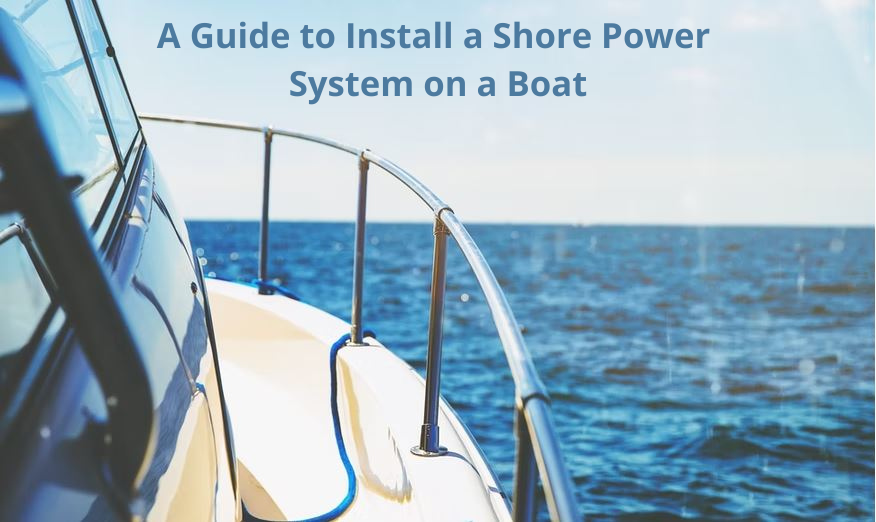When they talked about the “row, row, row, your boat”, they probably had not properly figured out the shore power system on the boat and probably that is why after decades of this popular song it is so important to have a basic guide about the shore power system on your boat. The basics of what is shore power must be now known by everyone handling a boat.
At the dock end, you require a new shore power cord for 120 volts 30 amps and a new Deck Inlet on board to connect it to. Inside the boat, the wiring for 30 Amps 120 Volts needs to be 10 AWG three conductor. The ABYC allows a maximum of 10 feet between the deck inlet and the main circuit breaker and for 30 Amp service the wire before the main breaker needs to be Triplex 10/3 AWG. Consider a galvanic isolator before going to the main breaker panel as it interrupts any galvanic currents between your boat and the dock, isolating you from problems in the marina caused by other boats or the dock and reducing the loss of zinc anodes.
Then the main breaker panel, to meet current ABYC standards needs to have a 30 Amp double-pole main breaker with a 30 mA ELCI trip. The 30 Amps is for overcurrent protection, the ELCI provides protection from stray currents that could cause electrocution. A typical circuit breaker panel for this would be the Blue Sea 8101 120 Volt AC Circuit Breaker Panel with ELCI Main which has the requirements above and also has two 15 Amp circuit breakers for distribution circuits as well as three additional spaces for more circuit breakers. Another option would be the Blue Sea 8102 ELCI Panel with 30A Double Pole Main + 2 Positions with Voltmeter. If the back of these panels is accessible in any way they are required to have a back cover such as the 4027 Panel Back Cover. The rest of your distribution wiring can be done with a smaller wire gauge. If you are installing AC receptacles make the first one in the series a GFI receptacle and then it will protect the rest of the chain. These GFI receptacles have a 5mA trip and protect the user from electric shock. Use a shore power converter, also known as a marine shore power convertor to keep the frequency in check.
All the usual ABYC standards apply to the wiring need to be harnessed in place every 18″ or run in conduit, all the receptacles have to be mounted in a box, any connections need to be clamped and protected, use locking crimp connectors such as rings or forks with captive ends. The AC ground must be connected to the engine block. When AC and DC conductors are run together, the AC conductors need to be sheathed, bundled, or otherwise kept separate from the DC conductors, using Triplex wire. Keep wires out of the bilge, any connections in the bilge need to be watertight. Keep wires away from hot exhausts or moving parts. All electrical appliances and equipment designed for permanent installation must be securely mounted to the boat’s structure.
On completion make sure all your connections are tight and then enjoy your ride.


